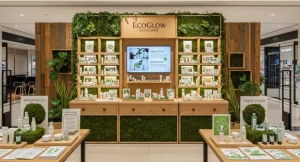How to Prevent Problems in Your Retail Display Campaign

No matter how big the brand or how great the product, experienced brand managers know there’s little margin for error when it comes to creating a successful retail campaign.
That’s especially true as tariffs threaten to shrink CPG margins across a wide range of categories.
Getting your product to the floors and shelves of major retailers like Costco, Walmart, Sam’s Club, and others requires meeting very high standards for ensuring everything from high-quality custom POP displays and packaging to your ability to meet deadlines, prevent damage and avoid logistical mishaps.
When you are navigating a tricky global supply chain in a period of disruption and uncertainty, even small missteps can mean big trouble. Big box retailers have unforgiving specifications in the best of times and expect the brands they work with to toe the line.
Here are a few examples of small problems that can multiply quickly if you don’t take steps to prevent and mitigate them.
Appearances Count
Whether you’re coordinating a campaign for a warehouse club or other big box retailer, packaging is the first indicator of product quality. Missing copy, artwork errors, misprints and omissions of product information and other legally required language are not small issues, no matter how small the error. All of these can lead the retailer to pass on your program.
At best, you’re risking delay, and delays can leave shipments quarantined and vulnerable to damage from handling, transportation or even weather. Retesting may be required to ensure that the product is an exact match to the retailer’s expectations. And missed deadlines can have repercussions on your retailer relationships that follow you into your next campaign.
Costs also grow if you have to produce replacement goods or packaging in the U.S. or have them re-made overseas and shipped back. It is much easier to ensure that you have a source of high-quality and meticulously sourced custom packaging in the first place, along with a rigorous system of internal approval of all graphics and copy. Mistakes can happen, but it’s critical to be able to catch and correct them quickly.
Test for Success
Ensuring that your product packaging and display look good, however, is not enough. They’ve got to be tough as well. The rigors of overseas and overland transportation will take a toll on packaging and displays that are not built to withstand them. Load and pack testing is a critical component of your retail campaign. Even a tiny bit of movement or jostling is enough to damage the product or the display. It can be tempting to rush or skip this step when deadlines are looming, especially if the product packaging and display is a design that has been used before. But small deviations, like a different weight of paper used for the top sheet, can create a gap or added pressure. When fully packed displays are traveling thousands of miles over land and sea, this can lead to big damage. And when product shows up damaged, you’ll be facing a whole lot more than a missed deadline. It is important to resist pressures to be a little less diligent in testing or validating test results. Just because something worked before doesn’t mean it will work again.
Don’t Settle for “Close Enough”
There’s no such thing as “close enough” when it comes to product packaging and display specifications. Fractions of a difference in product weight or dimensions have a way of multiplying. One brand that decided to use a slightly heavier material to add strength to its product packaging unintentionally added a fraction of an inch in size. When multiplied by the number of products on the display shelf, it was enough to push a row of product out of alignment and create a bulge in the trays. Experienced providers of custom POP and POS pallet displays know that when it comes to complying with specs, “close enough” is trouble.
Check the Weather
Sometimes the success of your campaign can depend on being on top of weather patterns on the other side of the world. Transporting goods during the summer typhoon season in Asia, for example, exposes your product to a higher risk of moisture damage. High humidity can lead to mold, especially if your product gets delayed and spends more time in storage as a result of any of the other issues already described. What starts as a misprinted label can end up as a pile of moldy product.
Retail Success: It’s in the Details
When it comes to your retail campaign, look for vendors with a track record of diligence and meticulous processes at every step, from pitching through project and supply chain management and fulfillment. Meticulously managed campaigns build credibility for your brand with both retailers and customers.
The best results come from campaigns that don’t leave anything to chance. With experience, attention to detail and well-honed troubleshooting processes, you can keep problems from getting between your retail efforts and your retail goals.
